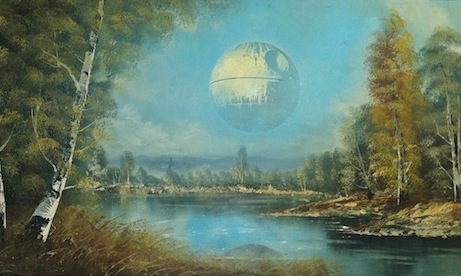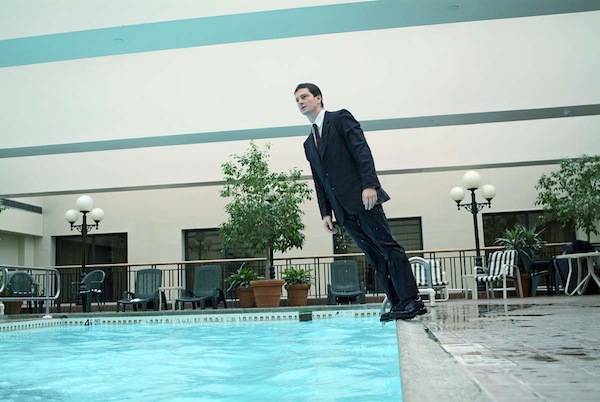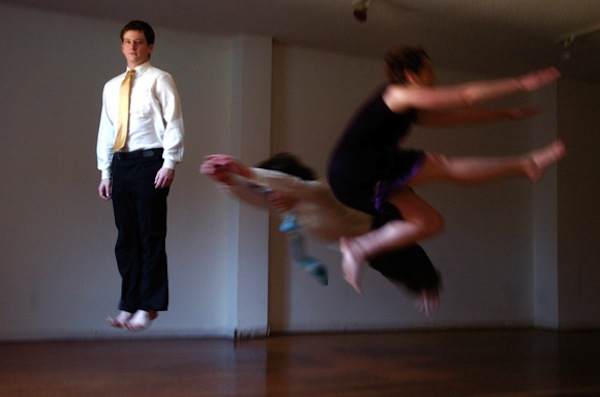On the eve of the first Artist U’s Free Intensive Workship in Baltimore, titled ‘building a sustainable life as an artist,’ Founder and Director Andrew Simonet agreed to have a conversation about the art of not giving advice, the meta-problems that most artists share, and how Artists U came about. Please note, the October 25-26 Intensive is now full, but they will be offering the same workshop again on February 21 and 22, 2014.
If you are unfamiliar with Artists U, take a look at their website and mission. This amazing resource for artists, musicians, and performers is a grassroots, artist-run organization that aims to change working conditions, funding situations, and the conversations that artists have – “in our heads, with each other, and with the world.” Artists U encourages and equips artists to live balanced, sustainable, and productive lives.
Your artistic practice is rooted in dance and performance. How did you come to create Artists U, a professional development organization for all types of creative people? How does your background as an artist influence your vision for other creative professionals?
With my two collaborators, I ran a dance company for 20 years. We made every possible mistake and learned from them. We constantly asked: how can this be sustainable? Eight years ago, I started doing professional development work with artists through the Creative Capital Foundation, leading workshops all over the country. Artists U came out of a lot of discoveries and observations:
Artists are hugely skilled. They are not needy. They work hard, learn new skills quickly and solve seemingly impossible problems daily. When we stop acting like beggars and start acting like partners, we can do anything. Artists don’t need to change into different people; we just need to use our art-making skills (planning, resourcefulness, collaboration, skill-building) outside the studio.
Artists start out mission-driven. We have something we want to give, something to offer. Many of us get tricked into being career-driven. But if we know our mission and lead with it, we go further, and our lives and work are inherently meaningful.
I think artists’ impact on the world is hugely diminished by our lack of clarity. Too many artists are reacting all the time, allowing the often paltry resources and opportunities of the art world to guide our choices. The work of Artists U matters if it does two things: makes artists stronger and, therefore, amplifies artist voices and impact.
The working culture of the arts is broken. At every level of success, too many artists are exhausted, broke, and overwhelmed. We brag about being workaholics. We scatter our energies in 27 different directions. I’ve never met an artist who needs to work harder. But every artist thinks that they do. Artists need to work less and work smarter.
When I started out as an artist, most “professional development” for artists was led by non-artists (foundation people, arts professionals) and pitched over the heads of most artists. The situation has improved, but I am still wary of professional development that isn’t artist-run. One aspect of this work is empowerment, artists taking power from structures that don’t want to give it up. That only happens if artists are calling the shots.
Artists know what they should be doing. Give artists space and time to articulate our visions and goals, and amazing things happen. I don’t know what artists should be doing. Funders don’t know. Curators don’t know. All too often, well-intentioned outsiders dictate what artists are doing, and the work suffers.
Artists are not oppressed. Artists are powerful. We reinvent the world. When we act like victims, complaining about what we deserve, we diminish our lives and our impact.
No one is coming. No one is going to knock on your door and turn you from the artist you are now into an artist who has made it. That doesn’t happen. But there are many people who will partner with you to move your work forward, and you already know a lot of them. When we wait for a big fancy savior to come along, we often overlook the partners who are already here.
There are big equity issues in the skills of being a good partner. These “partnering” skills are not evenly distributed among all artists: there are strong biases in terms of education background and class and (because this is America) therefore race. The limited resources of the art world tend to be accessed by the same small group of artists repeatedly because they know how to translate their work into the languages spoken by arts organizations and arts professionals. I went to a liberal arts college.
When I walk into a foundation, I see the kinds of people I went to college with using language I am familiar with, and exchanging a lot of subtle and not-subtle cultural signifiers. The good news is: these skills are teachable. One simple and direct way to address the inequities of the arts world is to help more artists become strong partners.
Side note: in cities like Philadelphia and Baltimore, the “arts renaissance” often has class and race biases. Not by intention but by default, it is largely by and for the MFA fine arts world that has a specific set of values, languages, and aesthetic practices. I think there is amazing work in Baltimore around this question, building an arts renaissance that reflects the entire city. I see more possibility and movement on this in Baltimore than in Philadelphia.
What is the history of Artist U? Where and when did it begin?
First and foremost, I couldn’t believe how unhappy and overwhelmed artists were, including “successful” artists. I didn’t want to live like that, and I didn’t want my community to live like that. I lead the Artists U workshops because I need to hear that information over and over.
Me and my collaborators were, in the scheme of things, pretty on the ball as a dance company. So a lot of artists would come to us for help and advice: a grant proposal, a budget, a press release. We spent a lot of time informally working with people, but they kept coming back. We were giving them fish, not teaching them to fish. I wanted to address the root problem, the meta-problem of artists not having enough traction and clarity to find their own solutions.
I started Artists U in 2006 in Philadelphia, working with 12 performing artists a year. It was intensive, with a group meeting every month and one-on-ones with an artist facilitator every few weeks. I learned a ton about being a planner, working with artists to make a strategic plan. Don’t give advice. Ask a lot of questions and listen a lot. Push back when it’s called for. And make them be specific.
The great thing about working artists is: they are so talented but so overwhelmed that even a little change makes a huge difference.
Over time, we started offering shorter workshops, reaching a broader population of artists than 12 per year. These shorter workshops focused on topics that all artists face (finances, artist statement, planning), so we opened it up to all disciplines.
I started coming to Baltimore in 2010 to explore building an Artists U here. We’ve had fabulous Baltimore facilitators, including the Artists U/Baltimore leader David Mitchell, along with Jeffrey Kent, Buck Jabaily, and Molly Ross (sadly now in Florida). We’re bringing a couple of new facilitators on board this year. And we are a program of the Greater Baltimore Cultural Alliance, which is fantastic. Their expanded efforts for individual artists are thrilling (I wish the Philadelphia Cultural Alliance was that forward thinking.) And we’ve been blessed with local funding from the William G. Baker Memorial Fund and the Deutsch Foundation, as well as national funding from the Ford Foundation and the Surdna Foundation.
Who is Artist U’s intended audience and why? Why do you feel strongly that a cross-discipline approach works best for this organization?
Professional artists. Our workshops now include all disciplines because we no longer have discipline-specific conversations. It is hugely helpful to convene artists of different disciplines because we all get a little provincial, a little wrapped up in the expectations and limits of our discipline. Artists can (and should) borrow and steal ideas from other disciplines and from outside the arts. I sometimes say: there is no Art World. There are just people who make things happen culturally. Be one of those people, and be inspired by other people like you.
How is this organization different than others? What are its goals?
We are artist-run, local, and free to all participants. We are skills-based, not need-based; we see artists as powerful. We empower artists to move toward their own visions and goals.
What are common mistakes and assumptions that many artists tend to make?
Waiting to be saved or discovered.
Doing too many things at once.
Buying into a received idea of “success.” We must define success for ourselves, or we are in for a lifetime of hurt.
Imagining that we are not just the center of our own world, but the center of the world. (You can’t imagine how rarely other people are thinking about you.)
Confusing career with mission.
Having a scarcity mindset that limits your sense of possibility.
Not looking beyond the art world for opportunities and resources.
Not planning.
Not budgeting.
Not saying no enough.
Not hearing no enough (not reaching far).
Seeing other artists as competition.
Comparing ourselves to other artists.
Is there a personal story from your life that explains how you came to create this organization for artists?
I don’t think this “explains” why I do Artists U, but it is a story that came to mind.
My cousin was a teacher in the Peace Corps in East Asia. A lot of the Peace Corps folks and other NGO people helped set up cooperatives, places where farmers could work together to buy supplies in bulk, get credit, and sell their products. There’s was one European guy that all the Americans thought was obnoxious. If he went to his cooperative and no one was working, he’d say: “Great, I’m going home.” If he found a problem in the bookkeeping, he’d say: “It’s wrong. Figure it out.” He didn’t help anyone. Five years later, when my cousin went back, that guy’s coop was the only one still functioning.
I’m inspired by a bunch of thinking and practices from outside the art world:
Community organizing and its focus on empowerment. When outsiders try to “change” a group, they end up reinforcing the power dynamics that created the problem.
Geoffrey Canada and the Harlem Children’s Zone. He talks a lot about “skimming,” about how programs like charter schools are utilized by the highest functioning, most aware families. He wants the families that would never know about a charter school or sign up for one. I feel the same way about artists: I think a lot of professional development ends up reaching the high-functioning population that I’m not worried about. I want to connect with the artists who have no traction, who wouldn’t sign up for “professional development.”
Alcoholics Anonymous. Only a drunk can help another drunk. And only an artist can help another artist. We understand each other, we’ve been there, and we can call each other on our b.s. It’s really hard for an arts professional to say, “Stop whining, artists!” But I can say that.
What can participants expect if they attend the free Artist U workshop on October 25 & 26? What will they be doing? How many people can attend?
That workshop is currently full. But we’ll do it again February 21-22, and folks can sign up online. But in general, you can expect big-picture thinking about the role of artists, money, time, etc, followed by specific tools we have seen artists use to great effect. Each artist, of course, picks and chooses the tools that seem useful. We just offer them up.
You can also expect to be in the room with a great range of talented, hard-working artists. You can expect a conversation that honors our achievements and talents and pushes us toward clarity. And you can expect good food and beverages, of course.
Bio: Andrew Simonet (Artists U Founder and Director) founded Artists U in Philadelphia in 2006. He was, from 1993 to 2013, a founding co-director and choreographer of Philadelphia’s Headlong Dance Theater, along with his collaborators Amy Smith and David Brick. Headlong created collaborative dance theater in Philadelphia, and toured nationally. Andrew’s projects included CELL, a performance journey for one audience member at a time guided by your cell phone, and This Town is a Mystery, performances by four Philadelphia households in their homes, followed by a potluck dinner. Headlong’s work was funded by the New England Foundation for the Arts’ National Dance Project, The Creative Capital Foundation, The Pew Charitable Trusts, The Rockefeller Foundation MAP Fund, The Japan Foundation, and The National Endowment for the Arts. Headlong’s work was produced by The Philadelphia Live Arts Festival, Dance Theater Workshop (NYC), P.S. 122 (NYC), Central Park Summerstage, The Jade Festival (Tokyo), The Massachusetts Museum of Contemporary Art, and the Portland Institute for Contemporary Art. With Headlong, Andrew helped found Dance Theater Camp, annual festival of workshops and collaboration for professional artists that is entirely artist-run and free for all participants, and the Headlong Performance Institute, a school for experimental performance with full college credit. Andrew created and ran the Dance Program at the Lawrenceville School, a private high school in New Jersey, from 1995 to 2005. Andrew lives in West Philadelphia with his wife Elizabeth and their sons Jesse Tiger and Nico Wolf.









